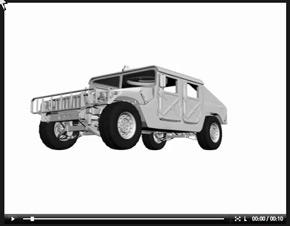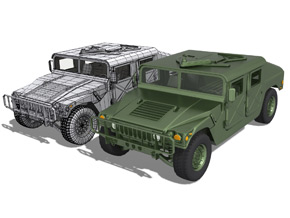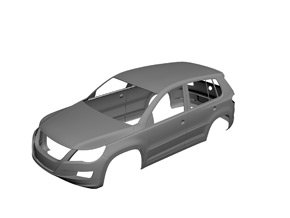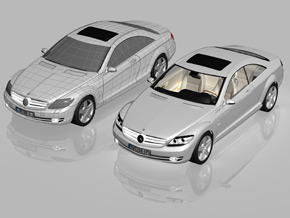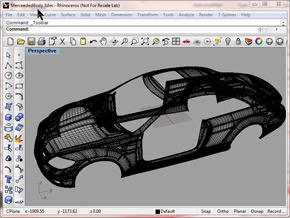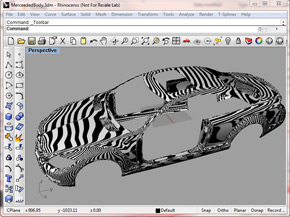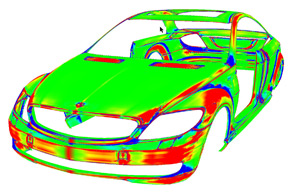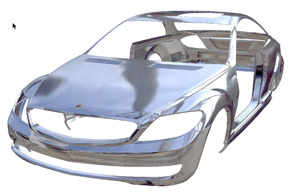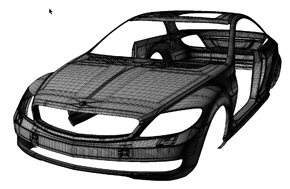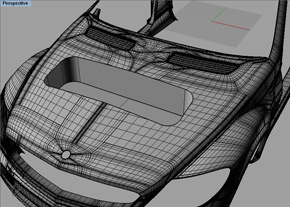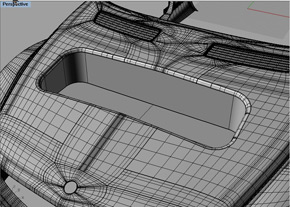Gem Poducts
Automotive
Most automotive design today is done with NURBS surfaces in a CAD system. The problem with that is that once surfaces are created it is difficult to update the design. The change in one surface may cause a change in many others. This leads to a representation which is basically not editable in a reasonable time frame. Minor edits may require reconstruction of the entire car body. CAD systems don't really do "automotive design" but rather the digital construction of existing designs are done in clay or other forms. Sub-D lends itself particularly well to the issues faced by automotive designers. Local changes are possible without producing holes in the object. The surfaces are mostly G2 in curvature. Sub-D lends itself very well to artistic editing operations necessary to produce a high quality automotive design. However, when it comes to engineering and manufacturing automotive designs, that work is typically done in CAD systems. Thus, it is somewhat impractical for automotive designs to be done in Sub-D systems because there is no easy way to transfer the Sub-D models into a CAD system for the engineering, drafting, analysis, and detailing.
With the advent of SubD-NURBS it is now possible to transform the automotive design directly into a CAD system where it can be refined or used as reference geometry for the detailed surface construction. This breakthrough technology will revolutionize the automotive design process by linking up the conceptual design process (in Sub-D) with the engineering process (in CAD).
Please click images to view full sized image..
|
Hummer Sub-D and NURBS |
|
VW Original Mesh and NURBS Surfaces |
VW NURBS Rendered |
|
Mercedes CL Class Sub-D and NURBS |
Mercedes Body imported into Rhino as NURBS |
|
Mercedes in Rhino Zebra Analysis |
Mercedes In Rhino Gaussian Curvature |
|
Mercedes in Rhino with Environment Map |
Mercedes in Rhino NURBS Surfaces |
|
NURBS Boolean in Rhino |
NURBS Fillet in Rhino |

